- Home
- Thomas Cahill
Heretics and Heroes Page 23
Heretics and Heroes Read online
Page 23
In the story of Jesus, Dürer, like Luther, found his way. There is another portrait by Dürer, the simplest of simple charcoals, finished with only a few strokes. It is the Head of the Dead Christ, curly-bearded, not curly-haired, garish face, undignified, as we all must be in death, and at its base the (proportionately) largest ad monogram in all of Dürer’s art. This is not Dürer as Christ but Christ as the ultimate figure Dürer would attach himself to. For Dürer, as for Luther, Jesus, even dead, makes sense of all our lives in a way that no one else can.
(illustration credit 79)
Looking at the dead Christ, the viewer may essay a wry smile but will hardly be tempted to laugh. Yet Dürer is fairly bursting with Luther-like humor, bold and hidden, harsh and gentle, and with references to the awful comedy of the human condition. Of his many engravings that feature portraits of his contemporaries, I would leave you with one: Albrecht of Brandenburg, the man who tripped off the Reformation by his involvement in the selling of indulgences throughout Germany (facing page, top). When we met him last (this page and following), he was a bishop. By the time Dürer sketched him, he had been made cardinal. How similar is his profile to Dürer’s depiction of another religious leader of some historical importance—Caiaphas, the Jewish high priest, as he judges Jesus, the prisoner who stands before him in the gloom of the night (facing page, bottom). For an artist of such consummate attention to detail, can the similarity be just a coincidence?
(illustration credit 80)
(illustration credit 81)
In connecting Dürer to Luther, I have one last, exceedingly northern image to show you, Dürer’s Knight, Death, and the Devil. No one has explained this mysterious picture—which has often been misinterpreted7—more eloquently than the German American theologian Paul Tillich:
It has rightly been said that Albrecht Dürer’s engraving, “Knight, Death, and the Devil,” is a classic expression of the spirit of the Lutheran Reformation and—it might be added—of Luther’s courage of confidence, of his form of the courage to be. A knight in full armor is riding through a valley, accompanied by the figure of death on one side, the devil on the other. Fearlessly, concentrated, confident he looks ahead. He is alone but not lonely. In his solitude he participates in the power which gives him the courage to affirm himself in spite of the presence of the negativities of existence. His courage is certainly not the courage to be as a part. The Reformation broke away from the semicollectivism of the Middle Ages. Luther’s courage of confidence is personal confidence, derived from a person-to-person encounter with God. Neither popes nor councils could give him this confidence. Therefore he had to reject them just because they relied on a doctrine which blocked off the courage of confidence. They sanctioned a system in which the anxiety of death and guilt was never completely conquered. There were many assurances but no certainty, many supports for the courage of confidence but no unquestionable foundation. The collective offered different ways of resisting anxiety but no way in which the individual could take his anxiety upon himself. He was never certain; he could never affirm his being with unconditional confidence. For he never could encounter the unconditional directly with his total being, in an immediate personal relation. There was, except in mysticism, always a mediation through the Church, an indirect and partial meeting between God and the soul. When the Reformation removed the mediation and opened up a direct, total, and personal approach to God, a new nonmystical courage to be was possible. It is manifest in the heroic representatives of fighting Protestantism.
(illustration credit 82)
These are extraordinary things to claim for any picture, especially one made in 1513, before Luther had even spoken aloud to the Germans. It is certainly hard cheese for any Roman Catholic or Orthodox Christian to digest, not to speak of any number of contemporary Protestants who have smoothed away the rough bits of classical Protestantism to create a gentler religion more to their liking.
But it speaks to an undeniable vein of northernness. So let us now consider some other northern visions.
1516–1535: UTOPIA NOW AND THEN
The contemplation of a possible apocalypse—and for some temperaments and predispositions, even the yearning for such a final and complete catastrophe—arises not so much from the secretly pleasurable anticipation of ultimate destruction as from a previous meditation, growing out of one’s own life experience, that reaches the conclusion that human beings are incapable of perfecting society or even of righting its most blatant injustices. So, a plague on all your houses, on all human activity. Nothing and no one will make the Earth a better place. We might as well have done with it. It is just this (as we may call it) anti-utopian, or dystopian, vision that must precede a yearning for apocalypse.
But other less radical, less complete, less final meditations are possible and were broadcast confidently throughout the sixteenth century. There is nothing remotely rational or moderate about apocalyptic thinking, which inevitably attracts fanatics, raving or otherwise. Instead, how about trying the wisdom of gradualism, incrementalism, and rational grappling with human difficulties and challenges? Human beings who are drawn instinctively to moderation rather than to extremes will inevitably find such an approach far more congenial than black-and-white visions of the End of All Things.
It is also true that such an approach was helped along by the Age of Discovery itself. Finding previously unknown peoples, living in societies bizarrely different from anything dreamed of by Europeans, encouraged what we would now call utopian thinking: let’s imagine a society different from the ones we are familiar with, a society that more reasonably answers to human needs and aspirations. The first Renaissance man to do this was an English lawyer and humanist, Thomas More, who was also counselor to his king, Henry VIII, and a man on the rise in London society, one on whom the monarch appeared to bestow extraordinary amounts of trust.
More was the inventor of the word “utopia,” which he made up by combining a Greek noun, topos, meaning district, and eu-, a Greek prefix meaning good—though if one pronounces the first syllable as “ou-,” one is using a Greek prefix that negates the noun that follows it. So “utopia” has the double meaning of good place and no place. It is, therefore, an ideal society that does not exist. If this strikes the reader as a trifle pedantic, I would ask you to note that we are now back in the world of the humanists, of playful scholars like More’s great friend Erasmus, far from the fight-to-the-death arguments of the Lutherans. More’s Utopia may indeed be the most blandly boring short book ever written (but one that I have read on your behalf).
There are two exceedingly ancient and famous literary utopias that precede More’s, one Jewish, the other Greek, each borne toward us on one of the two great rivers of our Western tradition. The ancient Hebrew depiction of the Garden of Eden in Genesis is a cheerful folk account in few words and with only elementary details sketched in, though the tempting serpent soon brings this prehistoric Mesopotamian utopia to its blank end. Plato’s republic, in the book of the same title,8 written in the high style of the ancient Greeks, is a detailed and grave, not to say chilling, description of the great philosopher’s vision of a perfect society, ruled by specially schooled philosopher-kings who have divided humans into different classes (guardians, soldiers, workers) based on their intelligence. Poetry and music, which can stir the less intelligent to wayward emotion, have been banned altogether.9
More certainly had The Republic in mind as the literary model for Utopia. The great, still open question about More’s invention is this: did he intend his utopia as a straightforward description of an imagined ideal or should we take it as a teasing, occasionally ironic presentation, perhaps a kind of satiric commentary on Plato’s daydream? Scholars have long disagreed, and continue to do so, over this question. The common reader who makes it through More’s arch prose, filled with insider references, is likely to find himself flummoxed by the evasive tone and unlikely to grasp any assured viewpoint. More was not as practiced a writer as his friend Erasmus
, though Erasmus’s less admirable quirks, particularly the occasional smugness of the prose, can also be found in More’s writing and sometimes overwhelm More’s exhaustingly cute sentences, alienating all but the most devoted reader.
The work is divided into two parts, Book I being an imaginary dialogue among Peter Giles (the Antwerp printer who would first publish Utopia), More, and a fictional Portuguese explorer named Raphael Hythloday, a surname made up of Greek syllables that suggest a “salesman of nonsense,” perhaps warning the reader against taking Raphael’s coming account too seriously. Alternatively, the explorer’s Christian name, Raphael, means “God heals” in Hebrew, which could push one in a more positive direction regarding this character’s function. Moreover, it is Hythloday who is given the lion’s share of the dialogue—and he soliloquizes in virtually endless sentences, even recounting earlier conversations in which he has taken part, thus presenting the reader with the grating challenge of dialogue within dialogue.
Nonetheless, Book I enables More to set forth a critique of his contemporary Europe, where kings are always starting unnecessary wars that bleed away their people’s wealth, as well as their lives. Also pointed out is the then common and cruel practice of executing thieves. But the sources of most theft are poverty and starvation, much of which can be traced to the practice of enclosure. For up and down the realm of England, wealthy overlords were claiming vast tracts of land previously held in common by local communities for their familial farming plots and for the grazing of their cattle. These tracts were being “enclosed” by the lords—that is, closed off from access to ordinary townspeople by means of stone barriers—for the purpose of grazing sheep. English wool had become highly valued throughout Europe. The lords therefore used new laws asserting their ownership against the immemorial claims and customs of the country people. As in our own world, the rich were becoming ever richer, and the powerful more powerful—through forms of legal fraud—while the increasing numbers of the poor were mired ever more deeply in their propertyless, powerless swamp of despair. As a jingle of the time put it, far more pithily than More’s conversationalists can manage:
The law locks up the man or woman
Who steals the goose from off the common
But lets the greater felon loose
Who steals the common from off the goose.
It would seem impossible not to attribute the characters’ judgments on the mores of contemporary England to More himself, even though these judgments are articulated primarily by Hythloday. Amidst the complaints, one stands out, especially More-like: our kings will never become the philosopher-kings of Plato’s republic. We must settle for something less, something more realistic. And here the gently humorous More speaks in his own persona against Hythloday’s vain insistence on an ideal society:
If you cannot thoroughly eradicate corrupt opinions or cure long-standing evils to your own satisfaction, that is still no reason to abandon the commonwealth, deserting the ship in a storm because you cannot control the winds. You should not din into people’s ears odd and peculiar language which you know will have no effect on those who believe otherwise, but rather by indirection you should strive and struggle as hard as you can to handle everything deftly, and if you cannot turn something to good at least make it as little bad as you can. For everything will not be done well until all men are good, and I do not expect to see that for quite a few years yet.
Here is the voice of the saintly realist, saintly because he has in his mind an ideal that he would himself prefer to follow, realist because he knows he must settle for engaging with real men in the real world. This is the voice of Thomas More, who had considered joining the Charterhouse, a London community of ascetic priests (who, like the teachers of Erasmus and Luther, especially revered The Imitation of Christ), but who came to believe that God was calling him to a secular vocation. Though he took with him into his very worldly world many of that community’s practices, especially personal prayer and penance, More did not expect the world to be a monastery. He knew, rather, that he was in for a wild, even a frightening, voyage; and he knew very well the dimensions of the enormous ego of his sovereign, Henry VIII, an ego that continued to grow to ever more monstrous proportions, just as his body continued to feed and fatten grotesquely throughout his reign.10
Part II of More’s book is devoted to Hythloday’s account of the large and fabulous island of Utopia, apparently somewhere near the endless Brazilian coast. Soon enough in Hythloday’s narrative, a numbingly arithmetical view seems to take over: the island has fifty-four cities, each divided into four equal parts. Each city has exactly six thousand households, each household numbering between ten and sixteen adults. These households are grouped together in units of thirty, each unit electing a keen scholar as magistrate to represent the voters. Every ten of these magistrates elect a kind of subruler; and all the magistrates together elect a prince, who reigns for life, unless he is removed because he threatens to turn tyrant.
In order to keep numbers constant and prevent overpopulation, people are redistributed as necessary. Utopia is a casteless, communist society where no locks are necessary, since there is no private property, and where citizens are rotated from one house to another every ten years, thus removing any false desires for ownership. Life in Utopia is rather kibbutz-like: everyone must learn to farm; and everyone must devote at least two years to this endeavor, men and women working side by side. All health care is free; and there is no such thing as unemployment, though six hours of work each day by each adult is enough to keep the economic engine of Utopia running smoothly. Tailors and dressmakers are unknown, as every adult wears the same cloak of undyed wool.
As was the case among sixteenth-century Europeans, Utopia permits conventional slavery both for prisoners of war and for native criminals, though good behavior will lead to their eventual freedom. While enslaved, they are bound by chains of gold. Gold is also used to manufacture chamber pots, thus conditioning everyone to find it repulsive and greatly reducing the temptation to steal. Likewise, jewels are given to children to wear, so that as they grow up they will recognize the frivolous lack of importance of such outward show. Thus, in various ways are Utopians bred to despise wealth as well as what we would call “conspicuous consumption.”
Many religions are found among the Utopians, including a kind of monotheism. Even Christianity is beginning to be introduced through limited contact with Europeans. Atheism is permitted, though hardly esteemed; but in general the Utopians are models of religious tolerance. Women seem not quite the equals of men, though it must be admitted that they are given far greater freedom and importance than in any known society of More’s time. Women can become priests in the various religions, priests can marry, and divorce is permitted to all, as is euthanasia. But premarital sex is punished by an ensuing lifetime of enforced celibacy. Adulterers are enslaved.
The elderly are the most honored citizens, and age seems in all things to outrank youth. Travel is allowed only by special permit; anyone found violating this rule is at first simply disgraced, but a second infraction brings certain enslavement.
The problem of assessing the author’s opinion on all these rules and customs is hardly slight. Does More mean for us to accept Utopia as an unalloyed ideal? Or are we to pick and choose among the various aspects, taking certain innovations to heart while rejecting others? Or is the whole construct meant to be viewed as an airy philosopher’s error that, starting on false premises, builds a society in the sky that could never come to be?
While there cannot be one definitive answer to these questions, we can perhaps approach a tentative solution, given what else we know about More. He will eventually be decapitated on the public scaffold for opposing—or rather for silently refusing to endorse—the marriage of Henry to Anne Boleyn, his second wife, while Henry’s first wife, Queen Catherine of Aragon, still lives. For this refusal—courageous or foolhardy, depending on your point of view—More will be canonized in 1935 as a saint by the Roman Ca
tholic Church and memorialized beautifully as “a man for all seasons”11 in his countryman Robert Bolt’s famous 1960 play (and 1966 film) of the same name.
Would a Catholic saint have sanctioned divorce, euthanasia, women priests, and communism? I think the answer may be yes. None of these issues had been decided definitively, either by pope or council, in 1516. There was at this time a still-seething controversy over who held ultimate authority within the Catholic Church. (It was to this question that Luther would soon give his novel answer.) But, you may object, the man died asserting that the king had no right to divorce his wife. I think, rather, that the man died asserting that the king had no right to set himself up as “supreme head of the Church in England,” as a result of which he was able to grant himself a divorce. In any case, More’s martyrdom lay sixteen years in the future, time enough for anyone’s theological thinking to evolve.
More stood virtually alone in the Europe of his day in his opinion that women were as educable and capable as men, an opinion that he famously put into practice in his own household. Women priests, especially in non-Christian religions, would hardly have scandalized him. At this time, he may rather have got a giggle out of the discomfort that such an idea would cause more conventionally minded churchmen.

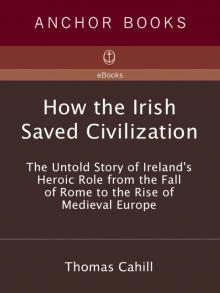 How the Irish Saved Civilization
How the Irish Saved Civilization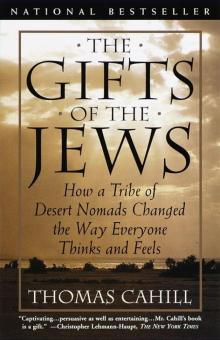 The Gifts of the Jews
The Gifts of the Jews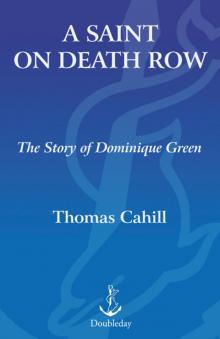 A Saint on Death Row
A Saint on Death Row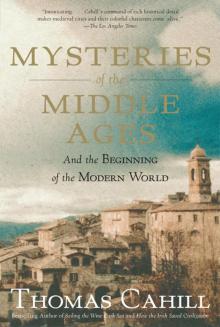 Mysteries of the Middle Ages
Mysteries of the Middle Ages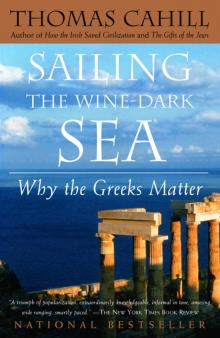 Sailing the Wine-Dark Sea
Sailing the Wine-Dark Sea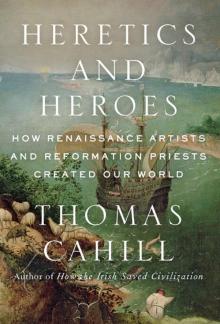 Heretics and Heroes
Heretics and Heroes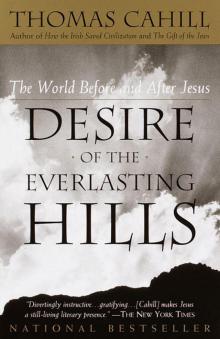 Desire of the Everlasting Hills
Desire of the Everlasting Hills